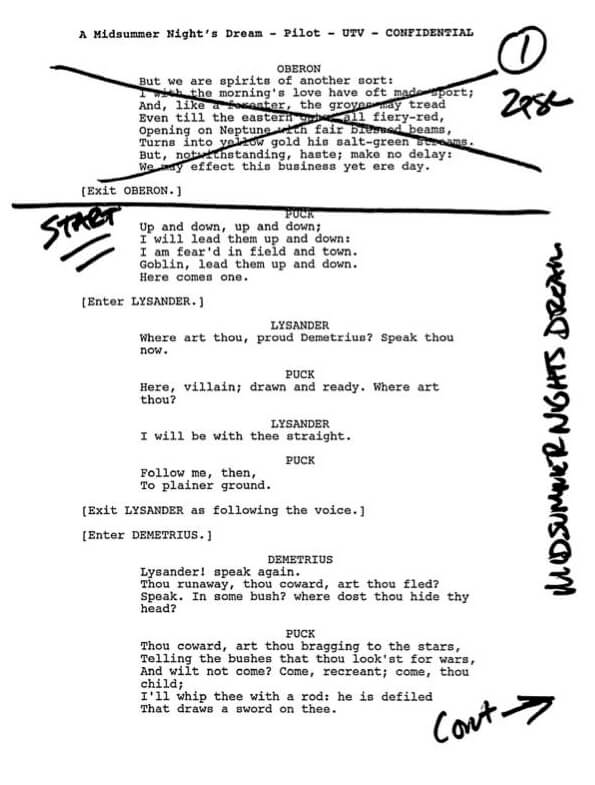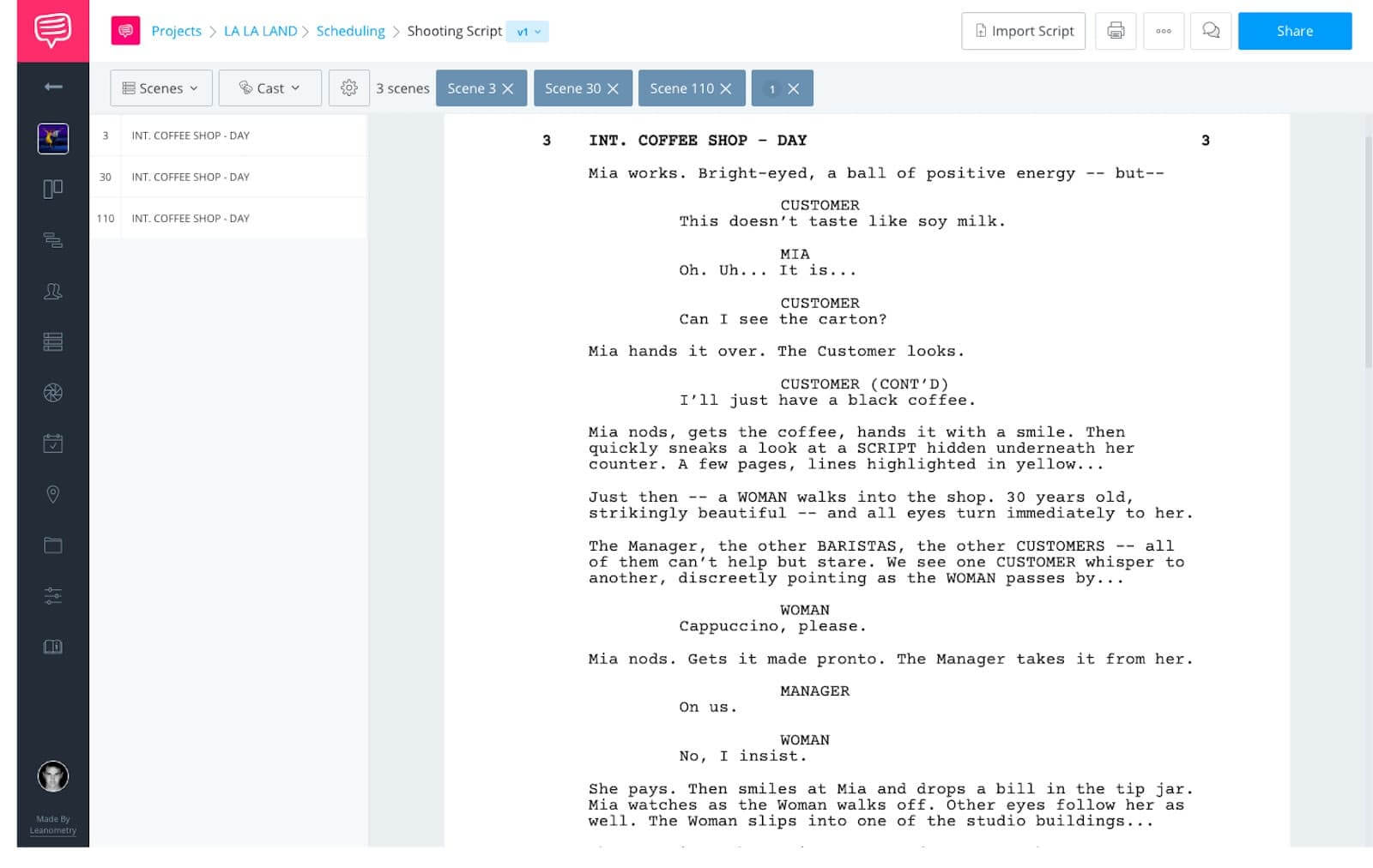One of the most important parts of any project is your cast. A great cast can make or break your film or project. But many filmmakers look at the casting process as a path of least resistance. There are several ways to make the right casting decisions that will drastically improve your chances for success. Here are our best casting tips that every filmmaker should use.
Table of Contents
Everything you need to know about Casting Tips
Casting Tips: How to Cast Influencers in Your Film
1
Can You Afford A Casting Director?
THE FIRST QUESTION IN THE CASTING PROCESS
1.1 BENEFITS OF CASTING DIRECTORs
Get a great casting director
There are many reasons a filmmaker should hire a casting director, especially if they have the budget to do so. Casting Directors specialize in locating the best possible fit for all the characters in your production.
Furthermore, they open many doors that filmmakers can't.
They can increase the value of your film by attracting name talent with whom they already have a relationship. Further still, good casting directors know how to interpret the creative language into living breathing talent.
Casting Directors | John Swanbeck
All of the tips you need to learn, they already know.
In other words, if you can afford one, there are few reasons you shouldn’t hire a Casting Director.
It’s wise to do so early in your development phase for all of the reasons above. There are financial benefits to attaching a well-known actor early.
Now, if you think you can do the job yourself and have a deep sense of belief in your ability to work with actors, do it.
If you're a more technical filmmaker who understands film techniques more than performances, consider enlisting some sage like wisdom.
1.2 ATTACH STARS EARLY
Attach talent to attract other talent
There are very different reasons for casting A-List Celebrities, TV Stars on the rise, trained and seasoned theater professionals or unknowns.
All of them have worthwhile benefits.
When you attempt to cast an A-List, bonafide movie star, it is usually to raise the profile and budget of your project.
While it is difficult to break into the rarified air of movie stardom, if you do, your project immediately becomes something of note and financial worth. But, good luck getting the script to them without a very big casting director.
TV Stars on the rise are much more approachable and will give some of the cachet of the movie-star without the baggage that comes along. By all means, reach out to talent agents and managers for your favorite television stars.
Auditions | John Swanbeck
You can use well-known names to attract talent, and this may mean a writer, director, cinematographer, or even another actor.
Unknown or undiscovered talent is certainly the most affordable, they bring their own mystique, and you may get credit for discovering the next big thing.
Only you and your budget can decide what you need from the casting process, and often your budget will get bigger with a big name actor. But the most basic of casting tips is knowing why you’re going after the kind of talent you’re looking for.
1.3 KEEP A CASTING RECORD
Organize the casting process
You want to keep a record of everything you do at this point. This includes the beginning of the process of finding the talent for your film or video. This will be of particular import if you will be submitting your project for distribution.
This may seem a bit extra, but trust us, it will be helpful for building your electronic press kit at the end of the production.
2
Beginning the Casting Process
DON’T FEAR GOING IT ALONE
2.1 THINK OUTSIDE THE BOX WHEN CASTING
Cast against type to boost your buzz
You may have an idea of what you want from your casting, but you will be better off with an open mind because it is beneficial to any project to at the very least consider alternative casting choices for your roles.
You may find that someone who doesn't make sense in the traditional sense of a role actually makes your film unique and more modern than the competition.
Cameras, the director, cinematographer, and script all play a big part in your films success, but if your cast is old hat, your project may fall flat.
While there are many types of projects that need varying degrees of hands-on casting, there is no doubt that a cast can make or break the outcome of what eventually gets filmed.
2.2 Submit Casting Notices
Find the right casting service
Knowing where to post your casting notice is an essential part of getting the best talent for your production. It is also one that is determined by the budget. If you have reached out to your favorites through their reps then there are several services you want to use for a general casting call.
Casting Services:
2.3 HEAD-SHOTS AND RESUMES AND REELS
Prioritize digital head shots
Let us be clear, you will be inundated with head-shots, resumes, and reels. Los Angeles and New York, particularly, are filled with actors.
Newly minted actors and veterans alike will be submitting to your casting call. Half of the submissions will be unsuitable for the roles you’re offering.
Again, you want to think outside of the box so take a moment to consider if your protagonist is something other than the norm, or what you had in mind. After you have looked at and passed over half of the resumes, place the remainder into piles by character.
Character Breakdowns | John Swanbeck
Now, remember the headshot is an idealized version of the actor. Take them at face value. The resume is very important.
One of the best casting tips is to make sure you will be able to work with this person for long periods of time. If there are common interests, then you may have met someone you can collaborate with ease.
2.4 ACTOR SELF TAPES
Ask for self-tapes from actors
Do not forget to ask for those who would like to submit self-taped auditions. You have a busy schedule. Many actors have busy schedules.
Let actors know that they can submit self-tapes.
For a film I produced two weeks ago we ended up finding our lead actress through a self-tape audition, and, boy, we're glad we didn't skip this particular step.
Powerful Characters | John Swanbeck
Self-tapes are a great way to stay on schedule by weeding out those who are ill-suited for the roles without having them come to meet in person.
Self-tapes are also a way to see actors who don’t live near the audition location. You may also get many submissions that will change the way you see the characters and the choices they face.
Just be sure to be explicit with your instructions for the taping and what you want in the reading.
3
The Casting Session
THE PROOF IS IN THE AUDITION
3.1 LOCATE THE AUDITION SPACE
Don’t cast from your living room
In order to find the perfect talent for your project, you must have the perfect space. Consider the place you hold your audition as a perfect reflection of your production.
The space where your talent will come to audition speaks volumes about your production. Holding auditions in your garage means your production may be perceived as unprofessional.
Rent an empty theater, a group workspace or even an office and it will tell your talent and their reps that you mean business.
3.2 HOLD THE AUDITION
Be on time and organized
There are several must-haves when holding auditions for your productions. Here are some rapid fire casting tips for audition day.
- Having a sign-in sheet for the talent is essential. If you are a SAG signatory production, this should be an Exhibit E.
- You will also need help in holding the auditions. An assistant for sign-ins is standard, but also a reader and camera operator will also be helpful so that you can focus on the performances.
- You should have a camera to record the auditions. After the first five, the performances will become a dizzying array of words and faces that you will have to go back and give second considerations.
- You need script sides at the audition.
Script sides are important enough to mention twice. A script side is very simply a portion of your script. You need these for two reasons:
- To print out the pages you will record on a specific shoot day.
- To print for actors to have a sample scene to perform in an audition.
Script sides used to be a hassle, and would require you to search through your script to find out which scenes have which roles, and then you need to specify which pages you wan to print out — all of this eating up valuable time.
They used to look like this...

The responsibility of making lots of sides falls to a Production Assistant or coordinator
StudioBinder makes it much easier...
Simply filter your script by scene or cast or even a specific element like a prop or a particular costume if need be — whatever you need.
Then save as PDFs and send in emails or print out on set in minutes.
For instance, if we were casting Mia (Emma Stone) in La La Land, we might want to just have actors audition using the coffee shop scenes.
Check out our script sides for the Mia/Coffee Shop auditions below:
There will cease to be hanging pages or portions of scenes that you don't want. In the past, you would have hanging portions of a previous or the next scene because you had to print based on the page number. Make sure to bring those script sides with you to your audition.
Take a look:
Modern solutions to menial labor save hours (or days) during pre-production and production.
Now that you know the essentials, remember the talent’s time is just as important as yours. Turn off your phone, focus on the job and be respectful — the Golden Rule still applies!
The talent will be able to tell if you are interested. If you are not, they won’t be either. Their audition is the whole reason you are both there.
Now, encourage them to show you what they’ve got. Also, give them any notes or encourage them to do something else with the performance and see how they take the notes. By all means, have them do the audition at least twice.
3.3 HOLD THE CALLBACKS
Call them back for chemistry
Any list of casting tips will say the same thing: callbacks. There are several reasons to hold callbacks after you have narrowed down the prospective talent for your project.
The most important reason to hold callbacks is chemistry.
Chemistry is that unmistakable quality that everyone has when working together. This is something that cannot be forced or faked. It’s something indescribable, you know when you see it.
Even the most beautiful and friendly of talent can’t fool the camera when it comes to this.
Casting Actors | John Swanbeck
Chemistry is either there or it isn’t. Your talent doesn’t have to be best friends, they don’t even have to like each other.
What your talent needs is that certain magnetism that is inescapable. It may be in a smile or nod or knowing glance at the end of the read. It may be body language, but the camera will see it instantly. So will you.
Hold callbacks and match the actors with their prospective counterparts or screen partners. When reviewing the tapes later you will know which fit is perfect.
RELATED POSTS
UP NEXT
How to conduct an effective table read
After all these casting tips, it's time to move the process along. With your stars in place, let's put their chemistry to the test. Your first order of business will be the table read for your project.
Make sure you make the most of this amazing experience for your talent, your crew and you with our next article, How To Hold the Most Effective Table Read.
UP NEXT: Effective table reads →
Project management for video creatives. Tasks, file sharing, calendars and more.
Manage video production timelines, tasks, storyboards, shot lists, breakdowns, call sheets. Made for video creatives, new media and film.

